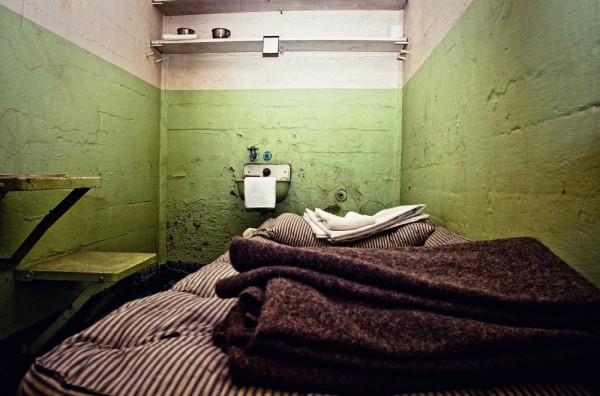Contrasting Reports on Prison Overpopulation Two Halves of Same Story

 Credit: Straight 8 Photography / Shutterstock.com
Credit: Straight 8 Photography / Shutterstock.com
Since California's historic realignment project initiated in October 2011, the state prison population in California has shrunk at least 50 percent. Significant advances have been made in implementing small-scale pilot programs and large-scale health care services. However, federally imposed goals have not yet been met. Two sides of a complicated issue are summarized in two disparate reports on California's 2012 prison evolution.
The CDCR's report, titled "The Year in Accomplishments: 2012" lays a rosy tint onto realignment in 2012; but, in addition to the balancing force of a report by the ACLU laying the path for future reform and highlighting current shortcomings, the documents illuminate distance traveled and the road to come. So, why does one have to hunt down both for the full picture? Why is the hard work of bureaucratic self-reflection so wholly left to an ombudsman?
In 2012, 9 specific areas saw improvement, according to the CDCR:
- Total inmate population reduced from 167 percent to 150 percent of design capacity
- Parolee population reduced 42 percent
- Specific improvements in dental/mental health care access
- Health certification for Department of Juvenile Justice
- Major construction on five court-ordered health care facilities
- Expansion of academic capacity by 17 percent thanks to accreditations and new programs, increasing juvenile certificates received
- Personalized rehab: COMPAS and one-on-one mentor pilot programs
- Overhaul of juvenile probation and new "evidence-based" substance abuse curriculum for staff
- Deal with Global Tel*Link to install signal-blocking cellular umbrellas over prisons in exchange for exclusive rights to secure prison payphones
Two phrases from the encouraging CDCR version of 2012 stick in the mind. The only reference to pressing weaknesses in the project's implementation comes in a cryptic description of realignment as a "work in progress." For an organization with such cohesive and readable summary of distance traveled, there should be a cohesive and readable summary of the unchanged recidivism (re-offenders) rates, the necessary reforms unapproved, and the federal standards unmet.
Secondly, while describing the parameters of 2012 realignment, the author takes care to emphasize "that no state prison inmate was transferred to a county jail or released early under realignment."
While true at the time, the politically motivated assertion now resonates with irony after a recent federal order to start doing just that after indirect methods fell over 9,000 inmates short of the cap that was originally scheduled for May, but has since been extended to December 31, 2013 by the governor.
The ACLU report doesn't negate the significant accomplishments made by the CDCR during 2012. On the contrary, it illuminates and complicates them, revealing elements of project implementation that are, in practice, far from realignment theory. As mentioned in a previous article, their recommendations for the road ahead, based on observed 2012 shortcomings, consist primarily of:
- Sentencing reform to reduce personal use drug penalties and low-level property penalties from felonies to misdemeanors, as well as limiting the maximum sentence for "a non-violent, non-serious and non-sex offense"
- Pretrial detention reform to expand community supervision options for low-risk offenders
- Mandated data collection, made publicly available, to observe the real-time effects of policies on recidivism
- Revise rules for fund allocation, erasing state incentives for incarceration-only policies
These recommendations do not come lightly. The authors have cause to be "deeply concerned" about the state of realignment based on the prevailing majority of counties pursuing state prison reduction through local jail expansion.
Hands are wrung over the millions being spent ($850 million this year, according to CDCR, and a projected $1 billion for 2013-14) without "sufficient mandates, incentives, or oversight." The incarceration alternatives crucial to realignment are implemented in some, but not enough counties to counter the pace of jail expansion.
Most significantly, the first three recommendations were attempted and failed by the state Legislature. Pretrial reform in SB 210 and drug sentencing reform in SB 1506 sputtered and died in the face of opposition from the law enforcement lobby. AB 109, a measure to mandate counties to collect prison data for impact analysis, was discarded by the governor "in name of county flexibility."
Also, notably absent in the CDCR report are details about the risk of infectious disease, which is ironic because recently the very construction projects intended to improve inmate health are kicking up dust carrying the fungus that causes Valley Fever.
Does the CDCR's vague reference to a "work in progress" encapsulate the important setbacks detailed by the ACLU? When does government's reliance on third party observers for cohesive critiques verge on a destructive lack of self-awareness? How can internal reports combine claims of "mission accomplished" with prescriptions for further evolution?



